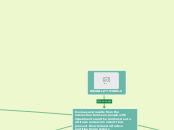
DISABILITY MODELS
Evolues and results from the interaction between people with impairments and the barriers due to attitude and environment that prevent their fuil and effective participation in society

Human Rights Model
moves beyond explanation, offering a theoretical framework for disability policy that emphasises the human dignity
incorporates both first and second generation human rights, in the sense that ‘it encompasses both sets of human rights, civil and political as well as economic, social and cultural rights
While the social model mostly fails to appreciate the reality of pain and suffering in the lives of somepeople with disabilities

Economic Model
Approaches disability from the viewpoint of economic analysis, focusing on ‘the various disabling effects of an impairment on a person’s capabilities, and in particular on labour and employment capabilities’
utilised by governments as a basic point of reference for formulating disability policy

Medical Model
As a problem of the person, directly caused by disease, trauma, or other health condition which therefore requires sustained medical care provided in the form of individual treatment by professionals.
medical care is viewed as the main issue, and at the political level, the principal response is that of modifying or reforming healthcare policy.

Moral/Religious Model
the oldest model
of disability and is found in a number of religious traditions,
including the Judeo-Christian tradition
Should be regarded as a punishment from God for a particular sin
or sins that may have been committed by the person with disability

Social Model
That disability is caused by the way society is organised, rather than by a person’s impairment or difference.
ways of removing barriers that restrict life choices for disabled people.
